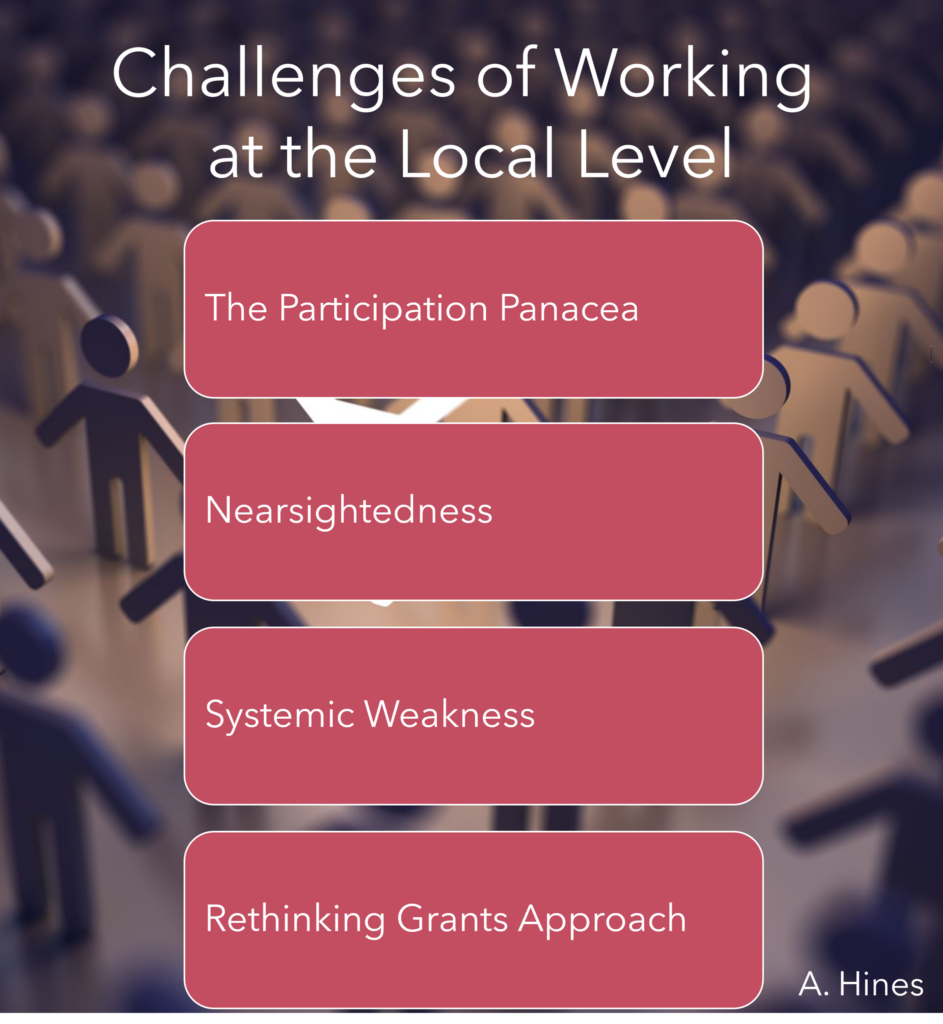Most of the ideas I’ve seen for an After Capitalism future put a heavy emphasis on the local level. Most of it comes from a view that local knows best in terms of local communities being most aware of what is needed and what works in their particular context. I think it is also to some degree an acknowledgement that governance at the national and state levels is not working well, so it is best to take matters into their own hands. I agree that more focus needs to be local, but I do sense there is a bit of romanticizing that localization is the fix. But there are some major challenges in working at the local:

- The participation panacea: The postmoderns, with their love of inclusion, participation, and community engagement assume that everyone else shares their love of participation. But they don’t. The postmoderns believe that if only more participation is enabled (1) everyone will eagerly participate, and (2) the resulting influx of ideas will solve the problems. I question both – getting participation is very difficult and the resulting ideas are not always helpful. My point is not that these are not good things to do – they are very good things to do – rather, that they are not magic solutions.
- Nearsightedness: Getting communities into the future is extraordinarily difficult. In my three decades of experience as a futurist, I’ve seen painfully little futures work at the local government level. It hasn’t been valued, or to be blunt, seen as worth being paid for. It has likely been perceived that long-term planning is more of a state or federal problem. I am happy to report that this has been changing over the last several years. For example, groups such as Strategic Government Resources, have built a foresight practice that focuses at the local government level.
- Systemic weakness: Problems gravitate to the weak link in a system. The more powerful links in a system will tend to find ways to get rid of or shift the vexing problems so they can “focus on what they do best.” Problems will sometimes end up on the doorstep of agencies or groups that will take it on because they are good and caring people. But they may not be up to the task. We just finished a project with a major library system, and they have more or less had problems dumped on them, and because they really care about their community, they take them on. But it’s not what they are trained for.
- Rethinking the Grants approach. Let’s be blunt for a second: Grants are an awful way to fund innovation, and a lot of innovation at the community level is funded this way. Another case where good and well-intentioned ideas are just not working. We have had to develop cadres of people responding to inanely complex RFPs that often do very little to address the “real” problems in a community. The movement toward strategic philanthropy, which looks for ways to be more focused and goal-oriented in pooling resources, is a very promising development. At the same time, the whole approach to innovation begs a rethink.
There is no doubt that we need to operate more effectively at the local as more responsibility and power shifts there. A first step in change, drawing on the great work of Jim Collins in Good to Great, is “confront the brutal facts.” There is lots of work to do at the local level, but the really good news is that promising developments are underway. — Andy Hines

Leave a Reply